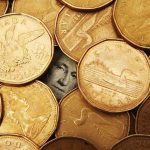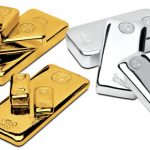Australian dollar gained ground against its US counterpart on trading Monday amid speculation that investors are exiting their positions on before year-end and ahead of the release of Federal Reserve’s preferred inflation measure.
AUD/USD touched a session high at 0.8946 at 5:40 GMT, after which consolidation followed at 0.8932, gaining 0.10% for the day. Support was likely to be received at December 20th low, 0.8856, while resistance was to be encountered at December 17th high, 0.8958.
Market players were probably exiting their bets, following Federal Reserve Banks decision to reduce the pace of its monthly asset purchases to $75 billion from $85 billion at its two-day policy meeting, concluded on December 18th.
Fed Chairman Ben Bernanke announced that the central bank’s purchases will be divided between $40 billion in Treasuries and $35 billion in mortgage bonds starting from the beginning of 2014.
The Federal Reserve Bank also decided to keep its benchmark interest rate range unchanged at 0.00% to 0.25%.
On Friday the US Bureau of Economic Analysis said that nation’s annualized Gross Domestic Product grew at a revised 4.1% during the third quarter of the year, or the strongest final reading since the fourth quarter of 2009 and up from the preliminary reading released in November, which pointed that the GDP will expand 3.6% in Q3.
At the same time, a budget agreement in Washington and Federal Reserve’s plan to taper its bond purchases will allow for a new growth forecast, International Monetary Fund Managing Director Christine Lagarde said on NBC’s “Meet the Press” on Sunday without naming new figures.
Inflation in the United States as measured by the core PCE price index probably climbed to 1.2% in November from a year earlier, in comparison with a 1.1% rate during the prior month, according to the median estimate of experts in a Bloomberg News survey. The official report is scheduled for release later in the day.
Consumer spending, which contributes to about 70% of US economic growth, probably rose 0.5% in November, following a 0.3% gain during the preceding month. The Department of Commerce will release the official figures today.
Meanwhile, the Australian dollar may rise to 89.50 U.S. cents, as investors take profits on positions betting that the Aussie will drop, according to Ray Attrill, the global co-head of currency strategy at National Australia Bank Ltd., Bloomberg reported.
Elsewhere, the Aussie was steady against the euro, with EUR/AUD cross dipping 0.05% on a daily basis to trade at 1.5324 at 8:33 GMT. AUD/NZD pair was gaining 0.10% to trade at 1.0902 at 8:33 GMT.





